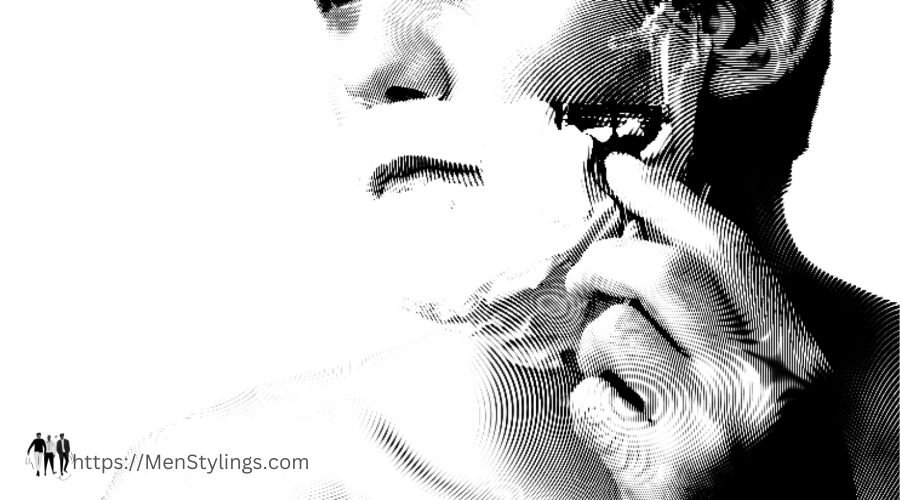Shaving is one of the most common grooming habits, but it can also be irritating. If you have acne-prone skin, you must know how to shave without worsening your skin. Follow these tips, and you’ll be able to shave comfortably and safely every time.
Steps & Tips:
If you have acne-prone skin, shaving can be a tricky proposition. Here are a few steps & tips to help you shave without making your acne worse:
- Wet your skin before shaving – This will help soften the hair and make it easier to shave.
- Use a shaving cream or gel – This will help protect your skin from the razor and reduce irritation.
- Use a sharp razor – A sharp razor will help you avoid irritation and cuts. Look for a razor with multiple blades and a lubricating strip.
- Go with the grain line – Shave in the direction of hair growth (with the grain) to avoid nicks and cuts. Use short, slow strokes and often rinse to avoid clogging the razor blade with hair and cream.
- Rinse well after shaving – Be sure to rinse off all traces of shaving cream or gel after you’re done shaving
How to Shave Your Acne Prone Skin Without Making It Worse?
If you have acne-prone skin, it’s crucial to be more cautious about shaving. Ever heard the saying, “the hair is a crutch for the skin”? It’s true with sensitive skin as well. You must ensure you don’t irritate your skin by shaving too often or forcefully. Here are a few quick tips on how to wisely shave your acne-prone face:
Prep your skin before shaving
If you have acne-prone skin, shaving can be a tricky business. On the one hand, you want to eliminate the hair causing irritation and inflammation; On the other hand, you don’t want to make your acne worse by irritating your skin or spreading bacteria around.
Prepare your skin before shaving because the key is to prep your skin before shaving to minimize the risk of irritation. So, start by washing your face with a gentle cleanser and warm water, then exfoliate with a soft brush or scrub to soften the hair and open up the pores. This will help to remove dead skin cells and reduce the chances of razor burn. Finally, apply a thin layer of shaving cream or gel before starting to shave. It will protect your skin from further irritation.
Use a shaving cream or gel
It’s important to use a quality shaving cream or gel to help protect your skin while you shave. So, apply quality shaving cream or gel to your face skin before you start shaving, and be sure to use a sharp razor so you don’t end up irritating your skin. Look for a non-comedogenic and hypoallergenic product that won’t clog your pores or irritate your skin.
Don’t shave too close to the skin:
When you have acne-prone skin, it’s important to avoid shaving too close to the skin. Shaving too close can cause ingrown hairs and can actually make your acne worse due to the irritation. To prevent this, keep your razor at least a millimeter away from your skin when shaving.
To prevent razor burn and irritation, be sure to rinse your razor after each stroke you make. This will help to remove shaving cream, hair, and debris that can get trapped on the blade and cause irritation and bacteria buildup. Lastly, don’t forget to moisturize after shaving.
Choose the right razor
There are a few things to consider when choosing the right razor for your acne-prone skin. First, look for a razor with fewer blades. More blades mean more chances of irritation and inflammation. Second, choose a razor with a lubricating strip to help reduce friction. And finally, look for a razor with an ergonomic handle for better control.
So, choose the right razor to shave your acne skin. Because a sharp, clean razor will minimize irritation and help prevent infection.
Go with the grain
Shaving against the grain can irritate your skin and make your acne worse. So go with the grain when shaving, especially if you have sensitive skin.
Rinse with cold water after shaving
After you’ve done shaving, make sure to rinse your face thoroughly with cold water. This will (cold water) help close your pores back up and soothe any irritation that could cause inflammation caused by shaving. Finish up with a light moisturizer.
Apply a moisturizer.
It’s essential to moisturize your skin after shaving, especially if you have acne-prone skin. Because applying a quality moisturizer to your skin post-shave will help to replace lost moisture and prevent dryness. Look for a moisturizer that contains ingredients like hyaluronic acid or glycerin, which can help attract and lock in moisture.
You should also avoid fragrances or other irritating ingredients that could worsen your acne.
Final Words
Shaving can be a tricky business, especially if you have acne-prone skin. However, following the tips above, you can shave without worsening your acne. Start by prepping your skin before shaving, use a sharp razor and go with the grain to avoid irritation. Finally, rinse your skin with cold water after shaving to help close the pores and soothe any irritation.
